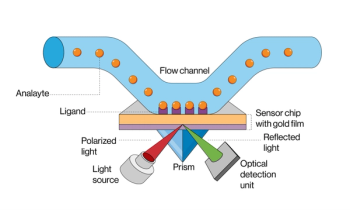
Analyzing Pigment Degradation in Cultural Heritage Artworks
This video was created with the help of NotebookLM.
Preserving the vivid colors of historical calligraphy and paintings remains a major challenge for conservators, and new research from Tianjin University offers critical insights into how pigments degrade under light exposure. The study, led by Yuxing Liu and recently published in Spectrochimica Acta Part A: Molecular and Biomolecular Spectroscopy, provides a detailed examination of pigment-binder interactions and introduces predictive models to mitigate photodamage in cultural heritage materials (1).
Why are pigments important?
Pigments serve not only as carriers of color but also as key markers of cultural and artistic history (2). While mineral pigments are generally considered chemically stable, many artworks continue to show fading and deterioration, even in carefully controlled museum environments (1,2). In this study, the researchers focused on two mineral pigments, azurite and clam powder, which were both traditionally employed in calligraphy and painting (1). By subjecting pigment-binder mixtures to prolonged light exposure, the team sought to determine the underlying causes of photodamage and color change.
Using visible reflectance spectroscopy, Fourier transform infrared (FT-IR) spectroscopy, and colorimetric analysis, the researchers revealed distinct differences in pigment stability. For clam powder, the observed color changes were largely attributed to binder degradation rather than pigment breakdown (1). Conversely, azurite demonstrated stability, with pigment-binder interactions actively inhibiting the degradation of adhesives (1). These findings highlight the importance of evaluating not only pigment chemistry but also the role of binders in long-term preservation.
What is unique about this study?
This study presented an analytical and predictive approach that is worth highlighting. For example, the researchers used principal component analysis (PCA) to process the reflectance spectra. This allowed them to ascertain measurable criteria for degradation (1). In addition, spectral response models were developed to forecast pigment behavior under different lighting conditions (1). This modeling capability equips conservators and museum professionals with tools to predict potential damage under specific light sources, ultimately informing the design of protective lighting technologies (1).
By bridging art history, chemistry, and advanced spectroscopy, Liu and colleagues have opened new avenues for preventive conservation. Their findings underscore the complexity of pigment-binder interactions and the necessity of tailored conservation strategies.
References
- Dang, R.; Hu, Z.; Tan, H.; Liu, Y. Why Do “Highly Stable” Pigments Still Deteriorate? – Clam Powder and Azurite's Mechanisms and Laws of Photodamage Using FT-IR and Visible Reflectance Spectroscopy. Spectrochimica Acta Part A: Mol. Biomol. Spectrosc. 2025, 345, 126757. DOI:
10.1016/j.saa.2025.126757 - Sustainability Directory, Cultural Heritage Pigments. Sustainability Directory. Available at:
https://lifestyle.sustainability-directory.com/term/cultural-heritage-pigments/ (accessed 2025-08-25).
Newsletter
Get essential updates on the latest spectroscopy technologies, regulatory standards, and best practices—subscribe today to Spectroscopy.





